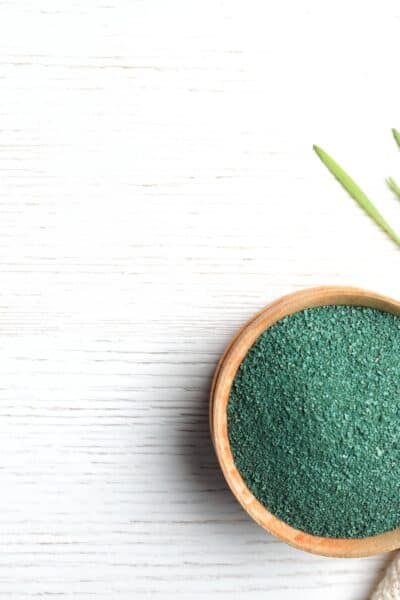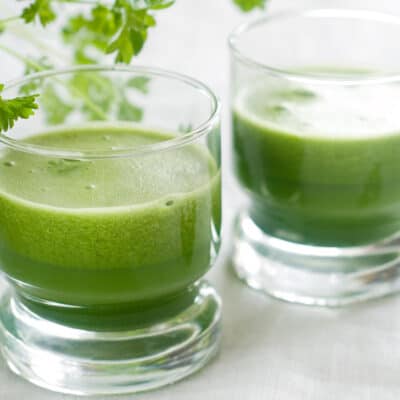Did you know that the quality of your indoor air can be worse than the outdoor air?
Especially for those who live in a climate that makes it hard to open windows for part of the year, this can be a big problem.
What makes your indoor air so polluted – and how can you change it? Check it out below.
Top 5 Air Pollutants In Your Home
DUST & MOLD
A little dust may not have ever hurt anybody; but enough dust for an extended period of time can cause trouble for your health. A study found hundreds of bacteria species in a building dust sample, and there is other research to show that bacterial proteins are linked to triggering asthma. If your body is constantly bombarded with fighting off airborne bacteria from the dust in an indoor environment, it can leave your immune system weakened and unable to function at full capacity.
What to do about it: The good news? Besides cleaning up your dust, this study showed that letting sunshine in your rooms will kill off much of the bacteria in dust so they cannot replicate. Check out more reasons why the sun is amazing for your health here. The Environmental Working Group also has this guide to reducing household dust.
Mold is its own beast and deserves its own article. I lived in a home that had black mold, and it severely affected my health – even with all the tools and remedies I have in my knowledge. Mold exposure can induce and worsen asthma and allergies, cause chronic lung problems, produce mycotoxins (an indoor air contaminant), and much, much more. Mycotoxins can suppress immune function, are linked to chronic kidney disease, and are a potent carcinogen to some animal species. Household mold is also linked to depression.
What to do about it: To fully mitigate the problem, we ended up moving out. Mold toxicity and mold exposure isn’t something to mess around with. If you suspect mold in your home, have it tested right away. If you have your mold professionally dealt with, understand their mitigation methods and products. It may be important to leave the house for a period of time in order to let the chemicals used to off-gas and make its way out of your home.
PET DANDER
Despite being loving companions, pet hair/fur and dander can contribute to poor air quality in your home. Depending on the type of pet you have, you may need to take extra measures to clean up your air. Instead of the hair or fur, pet dander is usually the culprit for allergies – a protein from the skin, saliva, or urine. If you find yourself sensitive to your pet, it may worsen seasonal allergies too – according to one study.
What to do about it: Although there may be better breeds than others, there’s no completely hypoallergenic pet. Bathing your pet regularly can help reduce dander, and I would also recommend using an air filter that has a HEPA filter. Keeping the bedroom free of the pet, although not always easy, can help reduce allergy symptoms while sleeping.
CHEMICALS & PESTICIDES
There can be many sources of chemicals in your home, and they can contribute to your air quality. Sometimes, these chemicals from everyday items are worse than outdoor air pollution, according to this article. New furniture, rugs, carpet, mattresses, paint, flooring, bedding, etc. are all sprayed with chemicals during manufacturing to keep them fresh. When unpackaged, these chemicals off-gas from the item and stay in your air. Off-gassing can occur for months, and even low levels of these chemicals – if at a constant rate with little to no ventilation in your home – can cause health issues down the road.
If you or your neighbors have a lawn care service that fertilizes or sprays your lawn for weeds, those chemicals can find their way into your home. Make sure your windows are shut the day of spraying, and remove all shoes when entering the house. If you choose to spray your lawn, it is certainly your choice – but I encourage you to research the chemicals used and the potential associated risks.
Cleaning chemicals also have VOCs that can affect the air inside your home. I’ve written about cleaning supplies extensively here and here. Make sure you know what’s in your cleaning products! Any products that have strong fumes – whether it smells good or not – should be avoided. A growing body of research is linking these fumes with the development of respiratory conditions and asthma, and triggering existing asthma.
What to do about it: I highly recommend opening and assembling any furniture outside and letting it stay in the sun for a few hours at minimum, and for a whole day if possible. If installing new flooring, do your research to make sure the flooring you purchase doesn’t have toxic components (here’s a great guide from the Environmental Working Group). Get no-VOC paint and definitely wash your new bedding before using it. If you want alternatives to home and lawn care, check out this article and this one.
SMOKE
Whether it’s from smoking or your fireplace, smoke inside your home can present a problem. Smoke of any kind will burden your lungs and liver, which have to work extra hard to filter harmful particles out of the very air you breathe. It’s no secret that smoking isn’t good for your health, but it is also important to take care when inhaling smoke from a fire as well. A wood fireplace will often put out more smoke than gas, but a gas fireplace can have the added pollutant of gas fumes.
Smoky outdoor air will also pollute your indoor air. Wildfire season on the West coast has created air quality issues that spread across the country. Smoke can carry all kinds of particles and chemicals within it, especially when the fires are burning things that are not meant to be burned and creating all kinds of chemical reactions. If the outside air in your area is contaminated by smoke or smoke pollution – even if you can’t smell it indoors – it is critical to clean your indoor air.
What to do about it: In a wood-burning fireplace, be cautious of the wood you choose to burn. Wood that is treated to burn easily or start on fire easily will add chemicals to your air. Make sure the flue to your fireplace is completely open. If you have a gas fireplace, make sure it ventilates correctly. You can have a fireplace professional check to make sure your gas connection is well secured to prevent excess gas fumes in your home. No matter what type of fireplace you have, if you can increase your ventilation while your fireplace is going, that is helpful. For clearing out the outdoor smoke, make sure you have an air purifier capable of removing smoke particles (see more below).
AIR FRESHENERS
But aren’t air fresheners supposed to help your air? Actually, most air fresheners contain toxic ingredients and only add to the pollutants in your home. Don’t believe me? Check out this article where I’ve written extensively on the subject – including what you can use instead.
What to do about it: I love using essential oils, which not only clean your air – they also provide health benefits and smell amazing! See my favorites to use for freshening up my home here.
What Else You Can Do To Improve The Air Quality of Your Home
GET AN AIR FILTER.
A high-quality air filter can be key to improving your indoor air quality. We have one in pretty much every room in our home. Make sure you research your air filter carefully. A good air filter can filter out all of the above air pollutants. After trying out many air purifiers, I ended up with an Air Doctor and love it. I spent so much money on other purifiers that didn’t work that great and wish I had saved it by going with Air Doctor first. (If you wish, you can use this link to get a major discount on an Air Doctor for your home!) On his podcast Heal Thy Self, Dr. Christian Gonzalez gives an in-depth review of a few different air purifiers – not to mention the gold mine of information in the first part of the episode. I highly recommend you to take a listen here.
ADD SOME AIR-CLEANING PLANTS.
Yes, it’s true! Plants do clean your air, and in fact there are specific species that do an exceptional job. NASA studied the top air-cleaning plants, and came up with a list of plants that astronauts use while in space and breathing the same air for several months or years. We have so many plants in our home! They literally breathe life into a space. One of our favorites is the snake plant that has absolutely thrived. And guess what? The snake plant is on NASA’s list!
Check them out here:
- English ivy (Hedera helix)
- Spider plant (Chlorophytum elatum)
- Devil’s ivy, Pothos plant (Epipremnum aureum)
- Peace lily (Spathiphyllum ‘Mauna Loa’)
- Chinese evergreen (Aglaonema modestum)
- Bamboo palm (Chamaedorea seifrizii)
- Variegated Sanseviera, (Dracaena trifasciata ‘Laurentii’)
- Heartleaf philodendron (Philodendron cordatum)
- Selloum philodendron, lacy tree philodendron (Philodendron bipinnatifidum)
- Elephant ear philodendron (Philodendron domesticum)
- Red-edged dracaena, marginata (Dracaena marginata)
- Cornstalk dracaena, mass cane/corn cane (Dracaena fragrans ‘Massangeana’)
- Weeping fig (Ficus benjamina)[4]
- Barberton daisy, gerbera daisy (Gerbera jamesonii)
- Florist’s chrysanthemum, pot mum (Chrysanthemum morifolium)
- Aloe vera (Aloe vera)
- Janet Craig (Dracaena deremensis “Janet Craig”)
- Warneckei (Dracaena deremensis “Warneckei”)
- Banana (Musa oriana)
IMPROVE YOUR INDOOR AIR FLOW.
Stagnant air is the perfect place for bacteria to thrive. Keep the air in your house fresh and moving – open up some windows and breathe life into your home! Having multiple windows or doors open can assist the air flow throughout your home. You can also add in fans if needed. If you are in a season when it’s too cold to have the windows open, try opening them for a short time once a day. It is also helpful to make sure you regularly clean the air ducts in your home. There are professionals who can do this quickly and efficiently for you. Make sure you change the air filter in your home’s air exchange system according to the filter’s instructions (it should be around every 6 months). These steps can assist in your indoor air quality.
Breathing in Health
Taking care of the air you breathe, the water you drink, the food you eat, the thoughts you think, and the joy you feel can absolutely transform your life. Your body is a beautiful place to live. Taking care of it and its surroundings is honoring the life you have. It is my hope that this article gave you tools and information to take care of the air inside your home.
Blessings,
Amber
P.S. Did you know that stem cells can help rejuvenate lung function? Check out the X39 phototherapy patches here.









